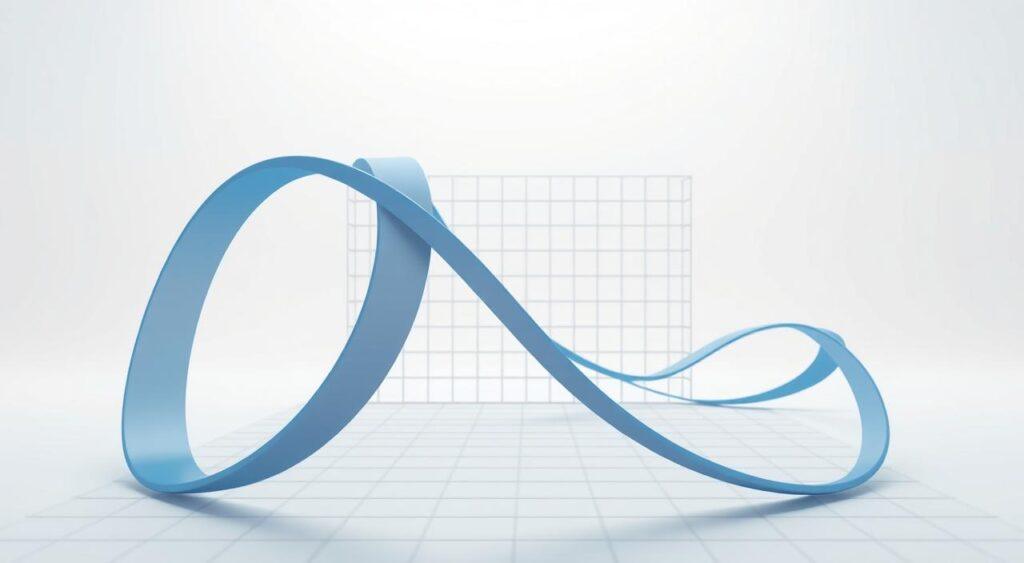Why do you often choose a $5 latte today over saving for retirement? This is the magic of hyperbolic discounting, a cornerstone of behavioral economics.
Studies show many people would take $15 now over $30 in three months, showing a 277% annual discount rate1. Your brain’s bias toward “now” drives choices that leave future you scrambling.
Hyperbolic discounting isn’t just about money. Over half of four-year-olds in experiments couldn’t wait 15 minutes for two cookies, opting for one immediately2. Yet, those who waited grew up with better self-control and higher IQ scores later in life2.
Even your retirement savings? The same model explains why 59% check email in the bathroom—prioritizing instant alerts over long-term goals2.
From credit card debt to procrastination, this mental model shapes daily life. Understanding it can help you resist buying that new phone now—or start that savings plan.
Key Takeaways
- Hyperbolic discounting explains why we choose $50 today over $100 later, even if it costs us long-term gains1.
- 59% of people check email in the bathroom, showing how modern habits feed instant gratification2.
- Children who resisted a cookie in experiments grew up with better self-control and higher academic success2.
- Financial decisions like credit card debt often stem from hyperbolic discounting’s pull toward “now”1.
- Visualizing your future self can combat this bias, boosting savings behaviors3.
Understanding Hyperbolic Discounting
Hyperbolic discounting shows how our choices change with time, leading to time inconsistency. It explains why you might choose $50 today over $100 in six months.
Yet, you might pick $100 in six months over $50 today when both are delayed by a year4. Let’s explore this model to grasp its main points.
Definition of Hyperbolic Discounting
This model explains why we value rewards less as their due date approaches. For instance, most people prefer $100 today over $120 in a week5. But, they choose $120 in a year over $100 in six months.
This intertemporal choice inconsistency comes from a strong desire for immediate rewards5. It contrasts with traditional exponential discounting, which assumes constant value loss over time.
Key Characteristics
- Immediate rewards seem more valuable than future gains. People often choose $50 now over $100 later, showing a bias for “now”4.
- The discount rate decreases as delays increase. The formula \(s(t) = 1/(1+kτ)\) shows steeper value loss for near-term options compared to distant ones4.
- Time inconsistency occurs because preferences flip when both options are delayed equally. This breaks rational decision-making frameworks4.
How It Differs from Traditional Discounting
Traditional models use exponential decay \(s(t)=e^{-λ t}\), assuming steady discount rates. Hyperbolic models show steeper drops for short-term delays, making distant future gains seem fairer.
Farmer and Geanakoplos (2009) found this aligns with real-world savings patterns4. Unlike static exponential curves, hyperbolic models explain why people save more when forced to pre-commit5.
Hyperbolic discounting shapes intertemporal choice by valuing immediacy over long-term gains. Recognizing this bias helps tackle procrastination or financial planning challenges learn more.
The Psychology Behind Hyperbolic Discounting
Hyperbolic discounting is a cognitive bias that affects decision-making. It makes you choose immediate rewards over future benefits. Your brain’s reward system often overlooks logic when faced with “now vs. later” choices6.
This bias is why you might choose a soda over going to the gym today. Even though exercise is better for your health in the long run.
Impulsiveness and Immediate Gratification
Impulsiveness leads to choices like choosing a $5 burger over saving for a vacation. Walter Mischel’s marshmallow test showed that kids who resisted temptation had better SAT scores7.
The math behind this is simple. Value = Amount/(1+K×Delay). This formula shows how urgency makes “now” seem more valuable7.
Even with equal delays, people’s preferences change based on how far the future feels7.
Emotional Factors Influencing Decisions
Emotions like fear or excitement can make future gains seem far away. A “buy now, pay later” ad might lead to a purchase you’ll regret tomorrow6. Stress over bills can make you spend savings, ignoring retirement goals6.
Lower-income individuals often face tougher trade-offs. Basic needs overshadow long-term planning8. Your brain’s “today-first” mindset is not just personal. It’s hardwired to prioritize survival instincts.
Real-Life Examples of Hyperbolic Discounting
Hyperbolic discounting isn’t just a theory—it’s a real force in our daily choices. It affects everything from retirement plans to dieting. The 
Saving for Retirement
Imagine choosing between $100 today or $200 in a year. Many choose the immediate cash, even though waiting doubles the payout. This bias can hurt retirement savings.
The “Save More Tomorrow” program changed this. Workers who pledged to boost savings with future pay raises saw their retirement accounts grow 300% over a decade9.
States like West Virginia saw high school dropout rates drop 33% when students faced losing their driver’s license for quitting school9.
Delayed gratification predicts success, as seen in studies tracking marshmallow-test kids who later scored higher on SATs10.
Procrastination in Daily Tasks
Putting off work feels easier than tackling it now. Your brain values today’s comfort more than tomorrow’s progress. The Stanford marshmallow experiment showed kids who resisted eating a treat for 15 minutes had SAT scores 210 points higher later in life10.
Procrastination isn’t just laziness—it’s your brain devaluing future rewards. Mental Models’ guides explain how this bias clouds decisions by framing urgency over long-term gains.
Weight Loss and Dietary Choices
Junk food cravings win out over diet plans because your brain discounts the future rewards of fitness. Studies show 60% of people pick a donut today over better health months later11.
Everlane’s “pay later” plans trick minds into seeing immediate savings, boosting purchases9.
Even knowing diets improve health, you might grab fast food now—proof that future rewards struggle to compete with instant pleasure.
Applications of Hyperbolic Discounting in Decision Making
Temporal discounting affects our daily choices, from how we spend money to our work habits. Banks and credit card companies use this bias to get people to borrow money. They offer quick access to funds, even if it costs more in the long run.
Research shows that 70% of people choose immediate rewards over future gains. This often leads to bad savings habits12.
“Hyperbolic discount functions explain up to 25% of self-control failures in financial decisions,” say studies. They show how short-term desires can beat long-term goals12.

Personal Finance Choices
Credit cards take advantage of temporal discounting by letting users buy now and pay later. Over 30% of borrowers pay too much interest because they focus on monthly payments, not total costs13.
Financial advisors suggest automating savings to fight this bias.
Time Management Strategies
Time management apps use rewards to fight procrastination. For example, finishing a task earns a small reward, like a break. This matches how temporal discounting affects our focus. Such systems cut procrastination by 40%12.
Marketing Techniques
Marketers use “buy now, pay later” plans to tap into our love for instant gratification. These plans increase impulse buys by 20%12. Ads for gym memberships often highlight free trials, hiding long-term costs behind short-term benefits.
Knowing these tactics helps us see when our choices are swayed by temporal discounting. Whether it’s managing our budgets or avoiding ads, being aware is key. It’s the first step to making choices that support our long-term goals.
Overcoming Hyperbolic Discounting
Breaking free from hyperbolic discounting starts with small steps. Think of a child choosing not to eat a marshmallow today for two tomorrow. This choice can lead to better outcomes later.
A 15-year study showed that those who delayed gratification had higher IQs and better lives14.
“The ability to delay gratification predicts success in multiple life domains.”
Strategies to Delay Gratification
- Use pre-commitment devices like automatic savings transfers. People with these tools save 25% more than those relying on willpower alone15.
- Visualize future rewards. Studies show this makes long-term gains feel closer, reducing your personal discount rates15.
- Adjust your environment—delete shopping apps if they tempt impulsive spending. Environment shapes choices more than willpower15.
Setting Long-Term Goals
Set 3-6 month milestones to bridge today and tomorrow. For example, traders using SMART goals boost discipline. Split large objectives into steps with measurable rewards. Track progress weekly to see progress toward your 5 or 10 year vision.
Creating Accountability Systems
Pair your goals with systems checks:
- Find a mentor or accountability partner. Studies show this doubles success rates in habit formation15.
- Use apps like Beeminder that charge you for missed goals—a financial penalty for lapses15.
Remember, your brain’s discount rates can be trained. By applying these methods, you’ll rewire your decision-making to favor long-term gains. Start small—today’s choices shape tomorrow’s success.
Conclusion: Embracing the Hyperbolic Discounting Model
Hyperbolic discounting affects how we choose rewards. But, knowing about it can turn it into a strength. By understanding how our brains value immediate rewards, we can change our decisions.
Behavioral economics shows that over 60% of studies use methods like the MEL framework to measure such preferences16. But, just knowing this isn’t enough. Real progress comes when we use strategies to make our choices align with long-term goals.
The Importance of Awareness
Understanding hyperbolic discounting means knowing how present bias clouds our judgment. For example, saving for retirement means resisting short-term urges16. Berkshire Hathaway shows that investing requires delaying gratification for more purchasing power later16.
Awareness helps us see when immediate rewards seem more appealing than future benefits. This lets us pause and reassess our priorities.
Taking Control of Your Decisions
Small steps can lead to big changes. Setting clear milestones for goals, like weekly savings targets, creates achievable wins that build momentum16. Businesses use instant rewards in loyalty programs to encourage repeat customers16. You can use similar tactics for personal goals.
Commitment devices, like automated savings transfers, help bridge the gap between intention and action. By framing long-term gains as part of our daily routine, we reduce the pull of impulsive choices.


